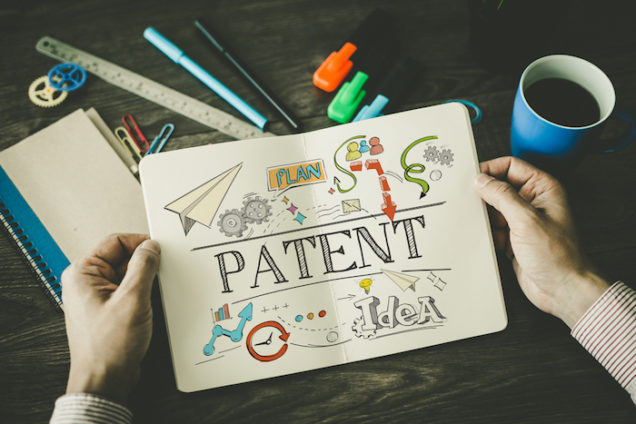Tagged: taxes
A New Exclusion from the Capital Gains Rate: Self-Created Intangibles
On December 20, 2017 Congress passed H.R. 1, the Tax Cuts and Jobs Act. This act introduces the most sweeping tax changes in decades lowering individual and corporate tax rates, with one stated goal of allowing buyers to write off the costs of new investments. In relevant part, this Act introduces one provision that removes a favorable tax rate for innovators with self-created intellectual property and eliminates the ability to treat certain self-created intellectual property as capital assets.
Under the prior tax scheme, self-created intellectual property would have been subject to the capital gains tax rate following sale of those assets. However, Section 1221 of the Internal Revenue Code under the new law exempts self-created intellectual property from capital gains treatment.
 “This new tax law amends IRC Section 1221(a)(3), resulting in the exclusion of a patent, invention, model or design (whether or not patented), and a secret formula or process that is held either by the taxpayer who created the property or a taxpayer with a substituted or transferred basis from the taxpayer who created the property (or for whom the property was created) from the definition of ‘capital asset.’ As a result of this exclusion, gains or losses from the sale or exchange of a patent, invention, model or design (whether or not patented), or a secret formula or process that is held either by the taxpayer who created the property or a taxpayer with a substituted or transferred basis from the taxpayer who created the property (or for whom the property was created) will not receive capital gains treatment.”
“This new tax law amends IRC Section 1221(a)(3), resulting in the exclusion of a patent, invention, model or design (whether or not patented), and a secret formula or process that is held either by the taxpayer who created the property or a taxpayer with a substituted or transferred basis from the taxpayer who created the property (or for whom the property was created) from the definition of ‘capital asset.’ As a result of this exclusion, gains or losses from the sale or exchange of a patent, invention, model or design (whether or not patented), or a secret formula or process that is held either by the taxpayer who created the property or a taxpayer with a substituted or transferred basis from the taxpayer who created the property (or for whom the property was created) will not receive capital gains treatment.”
Effectively, the sale of self-made intellectual property typically will now be subject to the higher top individual tax rate of 37 percent, as opposed to the capital gains tax rate of 20 percent. In practice, this will dramatically alter if and how a seller chooses to dispose of these assets.
Before, sellers would be encouraged to sell self-made intellectual property; however, under the new scheme, sellers are less encouraged to sell these assets because they will be subjected to a significantly higher tax rate. Under the previous tax scheme, a partnership’s sale of assets could be eligible for the long-term capital gains rate. Under the new Act, entrepreneurs and individual inventors possessing newly designed, self-made technologies will not be eligible for the lower capital gains rate when they create a company from that technology or sell the technology to another who will create a company. To net the same amount of after-tax dollars following a sale, owners of self-created intellectual property must seek a higher purchase price to offset the higher tax treatment. In effect, the new tax scheme alters the pricing and value of a patent.
Congress’s intent regarding the capital gains tax is that profits and losses arising from everyday business operations be characterized as ordinary income and loss, not capital gains. Therefore, the “self-made intangibles” exclusion is likely to be broadly construed to include most forms of intellectual property and this exclusion furthers that broad purpose. However, the practical effect of this exclusion from the capital gains tax is curious considering Congress’s goals of the Tax Cuts and Jobs Act. The exclusion eliminates an incentive to sell assets, which conflicts with the legislation’s goal of allowing buyers to write off the cost of new investments. Rather than further incentivizing investment, this provision erects a significant barrier to investment. Buyers will be eager as ever to purchase assets because of immediate expensing, but sellers will be hesitant to sell.
operations be characterized as ordinary income and loss, not capital gains. Therefore, the “self-made intangibles” exclusion is likely to be broadly construed to include most forms of intellectual property and this exclusion furthers that broad purpose. However, the practical effect of this exclusion from the capital gains tax is curious considering Congress’s goals of the Tax Cuts and Jobs Act. The exclusion eliminates an incentive to sell assets, which conflicts with the legislation’s goal of allowing buyers to write off the cost of new investments. Rather than further incentivizing investment, this provision erects a significant barrier to investment. Buyers will be eager as ever to purchase assets because of immediate expensing, but sellers will be hesitant to sell.
There are a few limitations to this discussion. Section 1221’s exception of intellectual property from the capital gains tax rate will likely only have a practical effect on the behavior of individuals, rather than corporations. The difference between the capital gains rate and ordinary income is much greater for individuals than it is for corporations; the corporate tax rate under H.R. 1 is 21 percent, only a one percent increase from the capital gains rate, as opposed to a 17 percent increase between the capital gains rate and the top individual income rate. Therefore, corporations are unlikely to treat the sale of these “self-created tangibles” significantly differently than under the previous tax scheme, at most seeking a modest increase in sale price to accommodate the one percent tax increase. In addition, Section 1221(b)(3) directs that musical compositions and copyrights in musical works may still be treated as capital assets. Therefore, not all intellectual property will be affected by this categorical exclusion from capital gains.
 Eric Dunbar graduated from Boston University School of Law in May 2018.
Eric Dunbar graduated from Boston University School of Law in May 2018.

